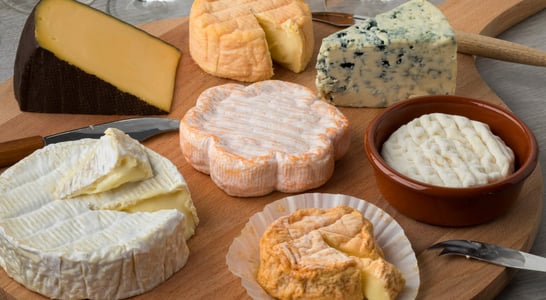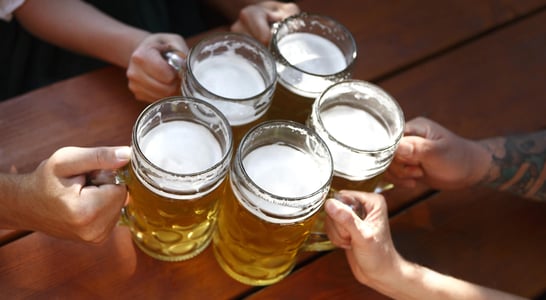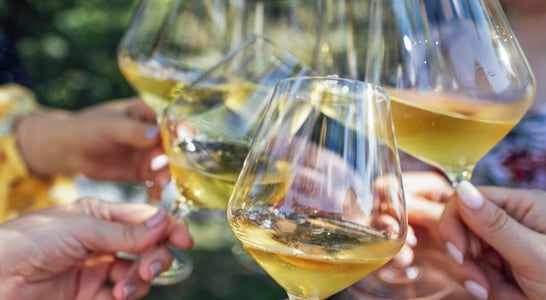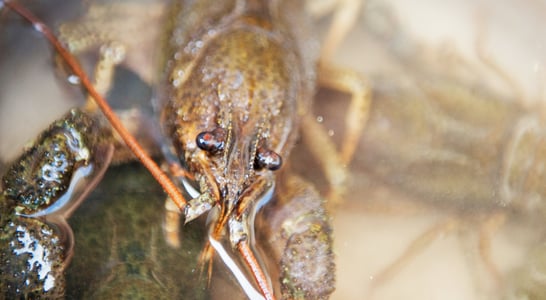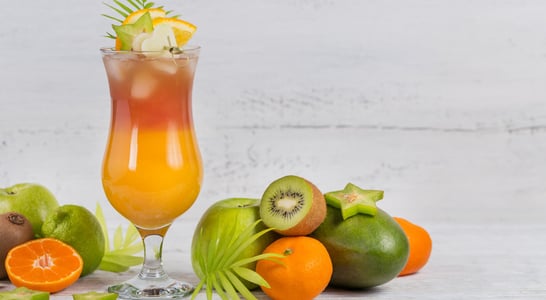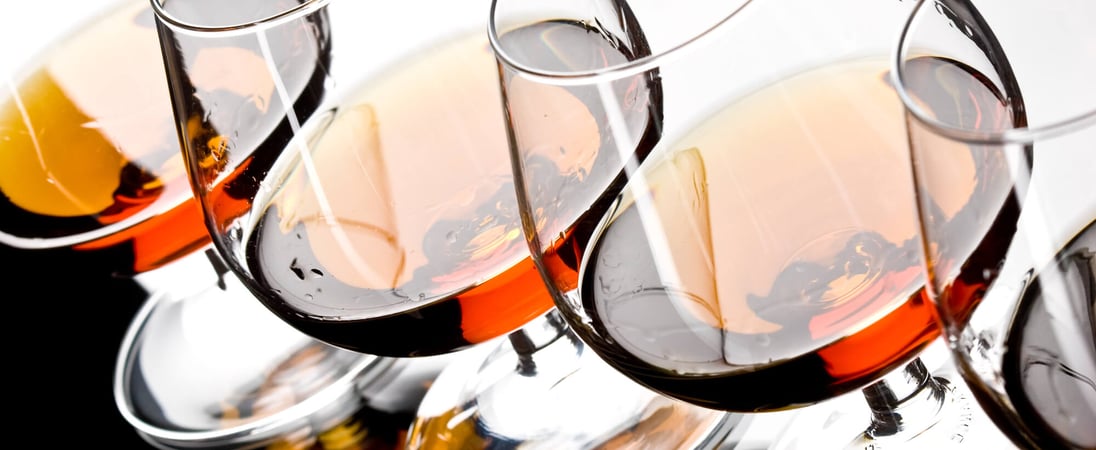
National Cognac Day
Made from wine grapes grown in a particular region of France, Cognac is actually a form of brandy. Host a tasting party and sit around in leather armchairs.
While there are many forms of distilled alcohol, some extra special ones seem to carry a distinct nobility to them.
They are somehow able to claim a bit of culture and social grandeur that just can’t be claimed by other alcoholic beverages.
When most people think of beer, the ideas that arrive in their minds are often of cheap bars and backyard BBQ’s. With wine, the themes might be similar but generally of a higher social class.
However, when a person gets into a conversation where Bourbon, Scotch or Cognac are mentioned, suddenly the rich red of mahogany furniture and distinguished gentlemen in high-class studies or dens come to mind.
In many people’s minds, cognac is far and away an improvement over the simply fermented grape, distilled and cultivated down to its ultimate final form.
National Cognac Day is dedicated to this rich beverage, and perhaps the most distinguished of them all!
How to Celebrate National Cognac Day
This certainly one of the grandest celebrations out there! Enjoy National Cognac Day with some of these suggestions:
Make a Cognac Cocktail
Although cognac can be delicious when sipped on its own, a great way to enjoy the flavors is to make it into one of a variety of cocktails.
- Sidecar. Possibly one of the most well-known cognac drinks, this one includes Cointreau and lemon juice and is served in a martini glass with a sugared rim.
- Royal Manhattan. Getting its name from Remy Martin’s Accord Royal, this drink mixes vermouth, bitters and is garnished with a brandied cherry.
- French Connection. Pair cognac with amaretto for this simple and delicious sippable drink that can be served over ice.
- Coffee Spritz. Use Grand Brulot Cognac (which is infused with coffee). Mix with a blend of Aperol and sparkling wine for a bubbly, citrusy flavor. Garnish with an orange wheel.
Try Out Interesting Varieties of Cognac
National Cognac Day can be celebrated by taking a trip to the local liquor store and selecting a few varieties to try out.
Get together a few friends and plan to have a positively thrilling taste test with dozens of varieties to choose from!
Here are some of the most distinguished brands of cognac that may be worth considering:
- Remy Martin XO. Running at just under $200 USD per bottle, this cognac is made from a blend of more than 400 different flavors, with tasting notes of plums, oranges, white flowers, cinnamon and hazelnuts.
- Pierre Ferrand Cognac Selection des Anges. An even more affordable version, this cognac offers a mahogany blend with flavors of jasmine tea, chocolate, honeysuckle, and even curry.
- Louis XIII Cognac. Another bottle from Remy Martin, but just a bit pricer (at over $4000 USD) the flavor is a combination of floral, spices, honey, and candied fruits.
Invest in Special Cognac Glasses
While sampling this drink, don’t forget to look into the various forms of glassware that are specially designed for serving Cognac. These special glasses can enhance the experience by allowing the drinker to experience the expanded aromas that are inherent in the drink.
Cognac glasses typically look like a dessert wine glass (sometimes known as a snifter), with a round bowl and a short stem, although not all cognac glasses have stems.
Fill a glass, take a sip, and savor the luxuriousness that is Cognac. It is the best thing to do on National Cognac Day!
History of National Cognac Day
To begin with, it would be appropriate to talk a little bit about what Cognac actually is. Cognac, in a way, is what happens when wine grows up and develops character, although that may come with a bit of a bias. Truly, cognac is simply an exclusive version of what most people know as brandy.
Cognac begins with a white wine that must be produced in one of six designated growing regions. It is definitely worth noting that if it wasn’t produced from a white wine grown in those specific regions of the French countryside, it is technically not considered a true cognac.
The French people from this region think it is important to note that, while all cognac is brandy, not all brandy is cognac. And this is simply because it does not come from the specific region in France. Ironically, the white wine from which cognac starts, is considered by most wine connoisseurs to be entirely undrinkable. But when it is made into cognac, it is absolutely delightful.
There is a further distinction about cognac which states that to be official, cognac must be produced from 90% Ugni Blanc, which is a particular form of white wine grape.The making of cognac all starts with the grapes being pressed and left to ferment for three weeks in the wild yeasts that grow naturally in those regions, without the addition of sugar or sulfur.
This wine is then distilled in alembic stills and placed into Limousin oak casks to age for at least two years where it goes from being nearly 70% to 40% alcohol.
Some people don’t realize that in its day in the late 1800s, cognac was as popular as vodka is today. It was particularly popular because the wine from this region was less likely to spoil than wines from other places. But now it has gone a bit by the wayside and has been left to the more discerning palate.
Cognac comes in multiple grades and exploring them can be a great way to spend National Cognac Day. This day pays homage to one of the world’s most premium drinks!
National Cognac Day FAQs
What is the significance of “Comet Vintages” in Cognac production?
In Cognac lore, “Comet Vintages” refer to years when a great comet appeared before the harvest.
Winemakers believed these celestial events led to exceptional eaux-de-vie. For instance, Cognac Croizet’s 1858 Cuvée Léonie is a renowned Comet Vintage, associated with Halley’s Comet.
How did Cognac contribute to the development of modern cocktails?
Cognac played a pivotal role in early cocktail culture.
In the 19th century, it was a key ingredient in classic cocktails like the Sazerac and the original Mint Julep, showcasing its versatility and influence in mixology.
What role did Cognac play during World War II?
During World War II, Cognac producers safeguarded their stocks from German forces by bricking up cellars and hiding bottles. This preservation allowed the industry to rebound post-war, maintaining the spirit’s legacy.
How did the phylloxera epidemic impact Cognac production?
In the late 19th century, the phylloxera insect devastated French vineyards, including those in Cognac.
Producers like Léon Croizet combated this by grafting American rootstocks resistant to the pest, revitalizing the industry.
What is the “Angels’ Share” in Cognac aging?
The “Angels’ Share” refers to the portion of Cognac that evaporates during barrel aging.
This natural loss, about 2% annually, contributes to the spirit’s development but also results in significant volume reduction over time.
How did Cognac become popular in the United States?
Cognac gained popularity in the U.S. during the 18th and 19th centuries, especially in New Orleans.
Its inclusion in early American cocktails and association with French culture enhanced its appeal among American consumers.
What is the origin of the term “Cognac”?
The term “Cognac” originates from the town of Cognac in France, where the spirit has been produced since the 16th century.
The region’s name became synonymous with the brandy produced there, now protected by AOC designation.
How is Cognac traditionally consumed in France compared to other countries?
In France, Cognac is often enjoyed neat as a digestif, highlighting its complex flavors.
In contrast, international markets frequently use Cognac in cocktails or as a mixed drink, reflecting diverse consumption preferences.
What are the unique characteristics of the Borderies cru in Cognac production?
The Borderies cru, the smallest Cognac producing area, is known for producing eaux-de-vie with distinctive floral notes, particularly violet, and a rich, nutty flavor.
Cognacs from this region are prized for their smoothness and aromatic complexity.
How did Cognac influence the creation of Armagnac?
While both are French brandies, Cognac’s distillation techniques influenced Armagnac production.
However, Armagnac typically undergoes single continuous distillation, resulting in a more robust spirit, showcasing regional variations in brandy-making traditions.
See what else is happening…
There’s always more going on every month at Days Of The Year. Here are our favorites this month!
Also on ...
View all holidaysNational Cheese Day
Gather friends or family and host a cheese-tasting event. With everything from gouda to comté to brie, there’s sure to be something for everyone on Cheese Day.
National Hug Your Cat Day
Embrace your little bundle of furry joy and take some time to appreciate them. Of course, if they don’t want to be hugged, you may need some Band-Aids.
Global Running Day
Whether you need to get back in the habit or start a new one, take the opportunity to improve your health and well-being by going for a run. Plus, it’s free!
International Corgi Day
Pamper your corgi, buy corgi-related merch to help support the rescue and care of these animals, or get involved with a local event on International Corgi Day.
We think you may also like...
National Drink Beer Day
Sample a new beer, visit a brewery, or just gather friends together to share and discuss one of the world’s most popular drinks.
